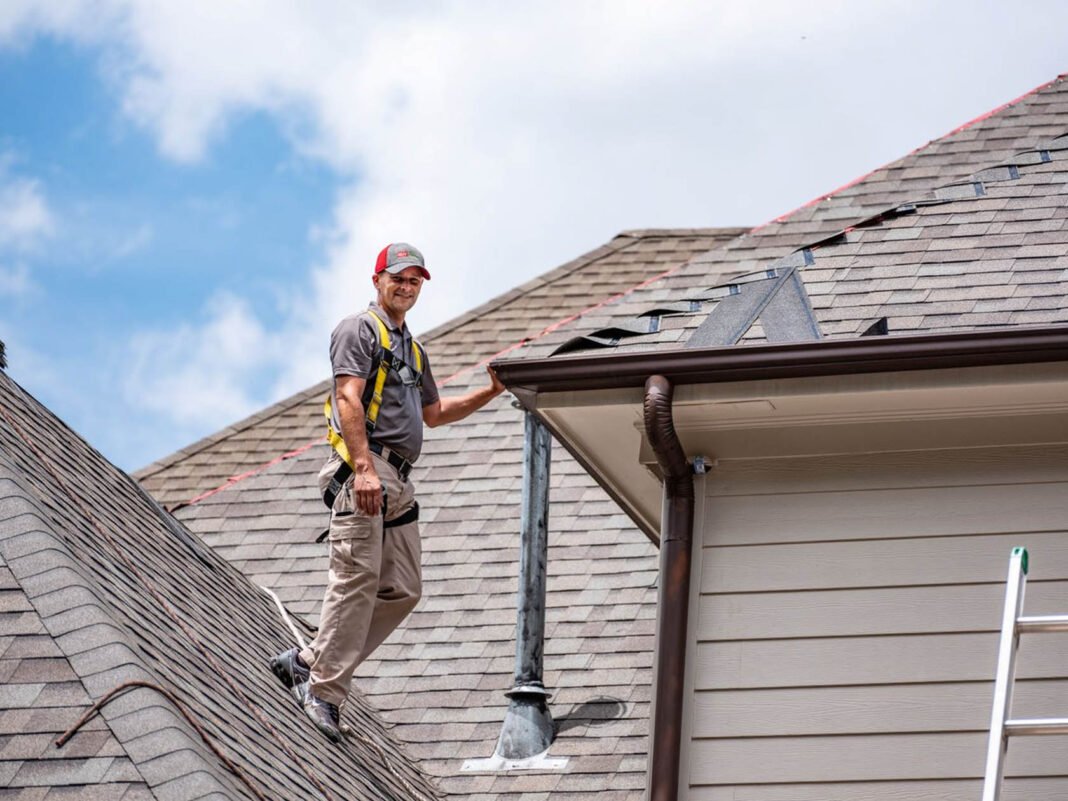Weather can have a significant impact on the condition and longevity of your roof. From intense storms and high winds to extreme heat and freezing temperatures, your roof is constantly exposed to the elements. Understanding how different weather conditions can affect your roof and taking proactive measures to mitigate potential damage is essential for protecting your home and ensuring the longevity of your roofing system. In this comprehensive guide, we’ll explore the impact of weather on your roof and provide practical tips for preparing for storms, heatwaves, and cold snaps.
Understanding the Effects of Weather on Your Roof:
1. Storms and High Winds:
Storms, including hurricanes, tornadoes, and severe thunderstorms, pose a significant threat to the integrity of your roof. High winds can lift shingles, tear off flashing, and even cause structural damage to your roof. Heavy rainfall can also lead to water infiltration and roof leaks if your roofing system is compromised. To prepare for storms:
- Inspect Your Roof Regularly: Conduct routine inspections to check for loose or damaged shingles, missing flashing, and other signs of wear and tear.
- Trim Overhanging Branches: Trim back overhanging branches that could potentially fall onto your roof during a storm, causing damage.
- Secure Loose Items: Secure loose items in your yard, such as patio furniture and outdoor equipment, to prevent them from becoming projectiles during high winds.
2. Extreme Heat:
Prolonged exposure to extreme heat can cause roofing materials to deteriorate prematurely. Asphalt shingles, in particular, are susceptible to thermal expansion and contraction, which can lead to cracking, warping, and curling. To protect your roof from heat damage:
- Choose Light-Colored Roofing Materials: Light-colored roofing materials, such as white or reflective coatings, can help reduce heat absorption and lower cooling costs.
- Ensure Proper Ventilation: Adequate attic ventilation is crucial for dissipating heat and preventing moisture buildup, which can accelerate roof deterioration.
3. Freezing Temperatures:
Freezing temperatures and ice buildup can wreak havoc on your roof, especially in regions prone to snow and ice storms. Ice dams, formed when melted snow refreezes at the roof’s edge, can cause water to backup under the shingles and leak into your home. To prevent ice dams:
- Improve Attic Insulation: Proper attic insulation can help maintain a consistent temperature on your roof, preventing snow from melting and refreezing at the eaves.
- Install Ice and Water Shield: Consider installing ice and water shield membrane along the eaves and valleys of your roof to provide an additional barrier against water infiltration.
Preparing Your Roof for Changing Weather:
1. Schedule Regular Roof Inspections:
Regular roof inspections by a qualified roofing professional are essential for identifying and addressing potential issues before they escalate into costly repairs. A comprehensive inspection can help detect damaged shingles, deteriorating flashing, and other signs of wear and tear that may compromise your roof’s integrity.
2. Address Maintenance and Repairs Promptly:
Promptly addressing maintenance issues and repairs can help prolong the lifespan of your roof and prevent minor problems from escalating into major headaches. Whether it’s replacing missing shingles, sealing leaks, or reinforcing flashing, tackling maintenance tasks in a timely manner is key to preserving your roof’s structural integrity.
3. Invest in Quality Roofing Materials:
When replacing your roof or undergoing roof repairs, invest in high-quality roofing materials that are designed to withstand the rigors of your local climate. Consult with a reputable roofing contractor to determine the best materials for your specific needs and budget.
4. Consider Roof Upgrades and Enhancements:
In addition to routine maintenance and repairs, consider investing in roof upgrades and enhancements that can improve your roof’s performance and durability. From installing impact-resistant shingles to adding attic ventilation and insulation, there are numerous upgrades available to enhance your roof’s resilience against the elements.
Conclusion:
Your roof is your home’s first line of defense against the elements, making it essential to understand the impact of weather and take proactive measures to protect and maintain it. By preparing for storms, extreme heat, and freezing temperatures, scheduling regular roof inspections, addressing maintenance issues promptly, and investing in quality materials and upgrades, you can ensure that your roof remains strong, secure, and resilient for years to come.


